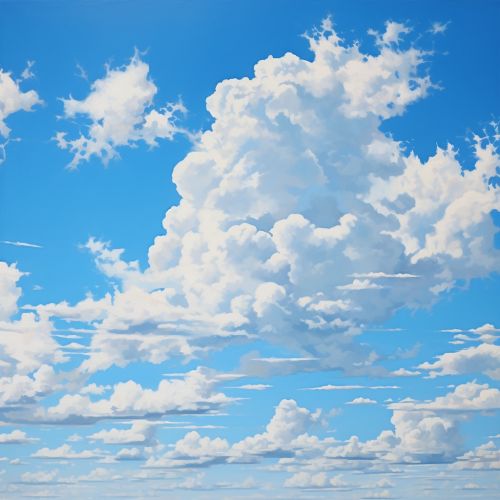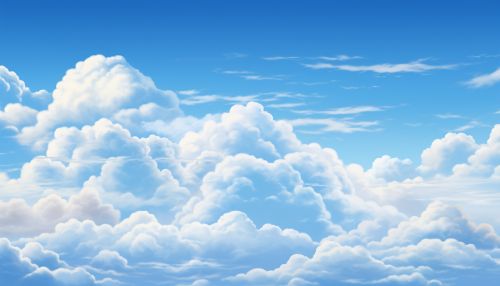Oxygen cycle
Introduction
The oxygen cycle is a biogeochemical cycle that describes the movement of oxygen within its three main reservoirs: the atmosphere (air), the total content of biological matter within the biosphere (the global sum of all ecosystems), and the lithosphere (Earth's crust). This cycle involves the photosynthesis of plants, the respiration of organisms, and the oxidation of various materials.
Atmospheric Cycle


The atmospheric oxygen cycle is the most visible and familiar part of the overall cycle. Oxygen is released into the atmosphere through the process of photosynthesis. This process is carried out by plants, algae, and some bacteria, which convert carbon dioxide and sunlight into oxygen and glucose. The oxygen is then released into the atmosphere, where it is available for respiration by other organisms.
The oxygen in the atmosphere is also used in the process of respiration, where it is used by organisms to break down glucose and release energy. This process produces carbon dioxide, which is then available for photosynthesis. This cycle of photosynthesis and respiration maintains the balance of oxygen and carbon dioxide in the atmosphere.
Biospheric Cycle
The biospheric oxygen cycle involves the movement of oxygen through the living organisms in the biosphere. This cycle is closely linked with the carbon cycle, as the processes of photosynthesis and respiration, which drive the atmospheric cycle, also involve the movement of carbon.
In addition to photosynthesis and respiration, oxygen is also involved in the decomposition of organic matter. When organisms die, their bodies are broken down by decomposers, such as bacteria and fungi. This process, known as decomposition, releases carbon dioxide and water, and also returns oxygen to the atmosphere.
Lithospheric Cycle
The lithospheric oxygen cycle involves the movement of oxygen within the Earth's crust. Oxygen is a major component of many minerals and rocks, and is also present in the Earth's mantle.
Oxygen is released from the lithosphere through the process of weathering. This involves the breakdown of rocks and minerals, which releases oxygen into the atmosphere. Oxygen is also taken up by the lithosphere through the process of sedimentation, where it is incorporated into new rocks and minerals.
Human Impact
Humans have a significant impact on the oxygen cycle, primarily through activities that increase the amount of carbon dioxide in the atmosphere. These activities include burning fossil fuels, deforestation, and other forms of land use change.
The increase in atmospheric carbon dioxide leads to an increase in the rate of photosynthesis, as plants and other photosynthetic organisms use the additional carbon dioxide to produce more oxygen and glucose. However, this increase in photosynthesis is not sufficient to offset the increase in carbon dioxide, leading to a net increase in atmospheric carbon dioxide levels.
Conclusion
The oxygen cycle is a complex system that involves the movement of oxygen through the atmosphere, biosphere, and lithosphere. This cycle is essential for life on Earth, as it provides the oxygen that organisms need for respiration. Understanding the oxygen cycle is also important for understanding the impacts of human activities on the global environment.
